Introduction to the classification of 4G and 5g base station antennas
Base station antenna classification
Omnidirectional antenna: it shows 360 ° uniform radiation in the horizontal pattern, that is, no directionality. It shows a beam with a certain width in the vertical pattern. In general, the smaller the lobe width, the greater the gain. Omnidirectional antenna is generally applied to mobile communication system in the same station type as the system of suburban counties and large districts, with large coverage.
Directional antenna: in the horizontal pattern, it shows radiation in a certain angle range, that is, directionality, and in the vertical pattern, it shows a beam with a certain width. Like the omnidirectional antenna, the smaller the lobe width, the greater the gain. Directional antenna is generally used in the mobile communication system for the station type of urban district system, with small coverage, large user density and high frequency utilization.
Different types of base stations are established according to the requirements of networking, and different types of base stations can select different types of antennas according to needs. The selection is based on the above technical parameters. For example, the omni-directional station uses omni-directional antennas with basically the same gain in each horizontal direction, while the directional station uses directional antennas with obvious changes in the gain in the horizontal direction. Generally, the antenna with horizontal beam width of 65 ° is selected in the urban area, and the antenna with horizontal beam width of 65 °, 90 ° or 120 ° can be selected in the suburb (depending on the station configuration and local geographical environment), while it is most economical to select the omnidirectional antenna that can achieve wide coverage in the countryside.
Mechanical antenna: refers to a mobile antenna that uses mechanical adjustment of the tilt angle. After the mechanical antenna is installed vertically with the ground, it is necessary to adjust the position of the support on the back of the antenna and change the inclination angle of the antenna to meet the requirements of network optimization. During the adjustment process, although the coverage distance in the main lobe direction of the antenna changes obviously, the amplitude of the vertical component and the horizontal component of the antenna remain unchanged, so the antenna pattern is easy to be deformed.
The practice shows that the best downward inclination angle of the mechanical antenna is 1 ° - 5 °; When the dip angle changes from 5 ° to 10 °, the antenna pattern is slightly deformed but does not change much; When the dip angle changes from 10 ° to 15 °, the antenna pattern changes greatly; When the mechanical antenna is tilted down by 15 °, the shape of the antenna pattern changes greatly, and it changes from a pear shape to a spindle shape when it is not tilted down. At this time, although the coverage distance in the main lobe direction is significantly shortened, the entire antenna pattern is not all in the sector of this base station, and the signals of this base station will also be received in the sector of adjacent base stations, thus causing serious interference in the system. In addition, in daily maintenance, if it is necessary to adjust the tilt angle of the mechanical antenna, the whole system should be shut down, and monitoring cannot be carried out while adjusting the tilt angle of the antenna; It is very troublesome to adjust the downward tilt angle of the mechanical antenna. Generally, maintenance personnel need to climb to the place where the antenna is placed for adjustment; The downward inclination angle of the mechanical antenna is the theoretical value calculated by the computer simulation analysis software, and there is a certain deviation from the actual optimal downward inclination angle; The number of steps for adjusting the tilt angle of the mechanical antenna is 1 °, and the third-order intermodulation index is - 120dbc.
Electrically adjustable antenna: refers to a mobile antenna that electronically adjusts the tilt angle. The principle of electronic downdip is to change the phase of the antenna element of the collinear array, change the amplitude of the vertical component and the horizontal component, and change the field strength of the composite component, so as to make the vertical pattern of the antenna downdip. Since the field strength in all directions of the antenna increases and decreases at the same time, it is ensured that the antenna pattern changes little after changing the inclination angle, so that the coverage distance in the main lobe direction is shortened, and at the same time, the coverage area of the whole directivity pattern in the service cell sector is reduced without interference. The practice shows that when the dip angle of the electrically tuned antenna changes from 1 ° to 5 °, the antenna pattern is almost the same as that of the mechanical antenna; When the dip angle is 5 ° - 10 °, the antenna pattern is slightly better than that of mechanical antenna; When the dip angle changes from 10 ° to 15 °, the antenna pattern changes more than that of mechanical antenna; When the mechanical antenna is tilted down by 15 °, its antenna pattern is significantly different from that of the mechanical antenna. At this time, the shape of the antenna pattern is not changed much, and the coverage distance in the main lobe direction is significantly shortened. The entire antenna pattern is within the sector of the base station. Increasing the tilt angle can reduce the coverage area of the sector, but no interference is generated. Therefore, the use of the electrically tuned antenna can reduce the call loss and reduce the interference. In addition, the electrically adjustable antenna allows the system to adjust the downward inclination of the vertical directivity map without stopping the machine, and monitor the adjustment effect in real time. The step accuracy of adjusting the inclination is also high (0.1 °), so the network can be finely adjusted; The third-order intermodulation index of the electrically modulated antenna is - 150dbc, which is 30dbc different from that of the mechanical antenna, which is conducive to eliminating adjacent frequency interference and stray interference.
Dual polarization antenna: dual polarization antenna is a new antenna technology, which combines two pairs of antennas with mutually orthogonal polarization directions of + 45 ° and - 45 ° and works in the transceiver duplex mode at the same time. Therefore, its most prominent advantage is to save the number of antennas of a single directional base station; In general, the directional base station (three sectors) of LTE digital mobile communication network uses 9 antennas, and each sector uses 3 antennas (spatial diversity, one transmitter and two receivers). If dual polarization antennas are used, each sector only needs 1 antenna; At the same time, in the dual polarization antenna, the polarization orthogonality of ± 45 ° can ensure that the isolation between + 45 ° and - 45 ° antennas can meet the requirements of intermodulation on the isolation between antennas (≥ 30dB), so the space between the dual polarization antennas only needs 20-30cm; In addition, the dual polarization antenna has the advantages of the electrically modulated antenna. The dual polarization antenna used in the mobile communication network, like the electrically modulated antenna, can reduce the call loss, reduce the interference, and improve the service quality of the whole network. If the dual polarization antenna is used, since the dual polarization antenna does not have high requirements for erection and installation, there is no need for land acquisition and tower construction. Instead, it is only necessary to erect an iron column with a diameter of 20cm and fix the dual polarization antenna on the iron column according to the corresponding coverage direction, so as to save capital investment, make the layout of the base station more reasonable, and make the selection of the base station site easier.


